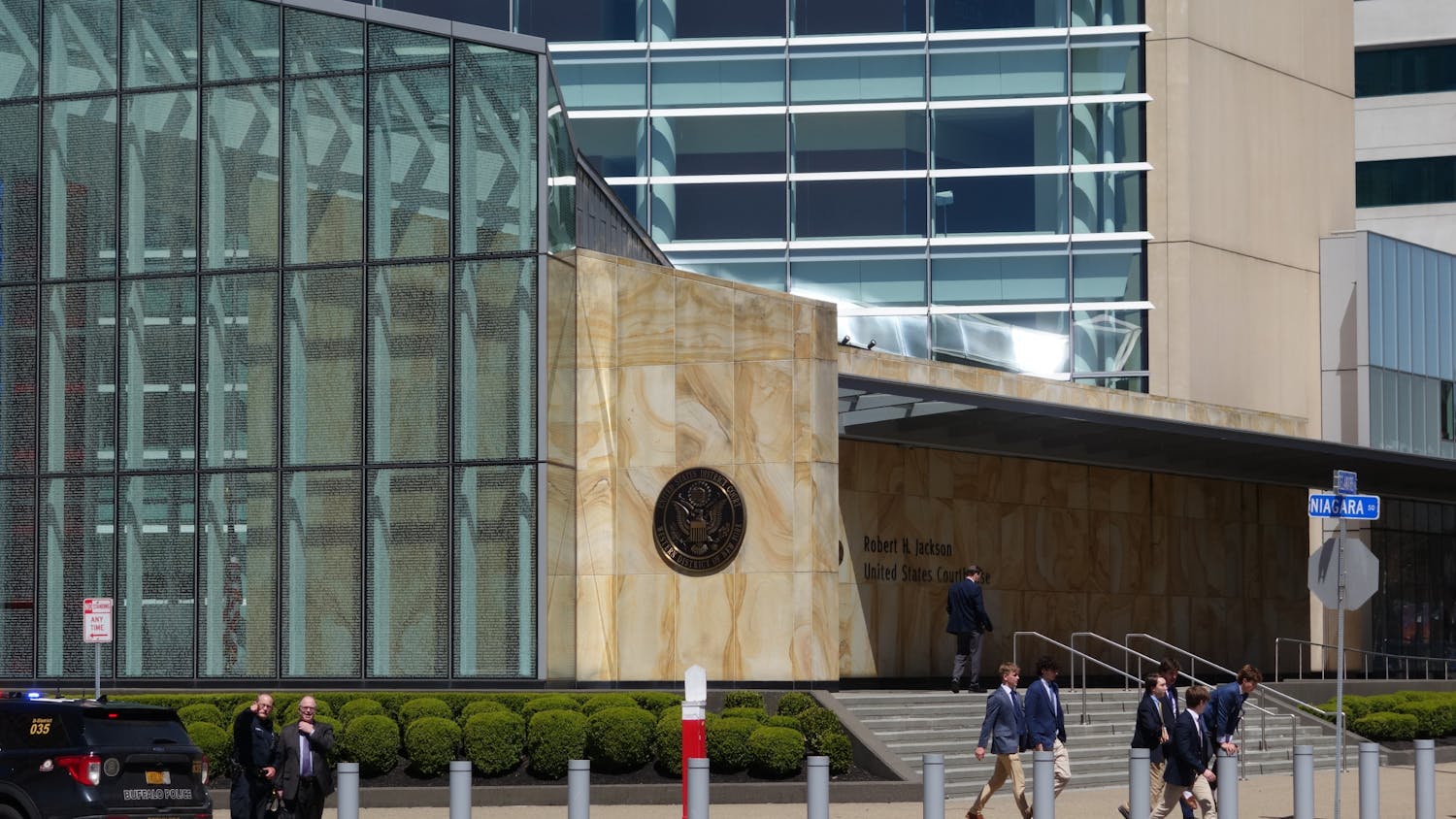UB will strip the names of racist namesakes Millard Fillmore, James O. Putnam and Peter B. Porter from four campus locations.
The decision follows UB President Tripathi’s June 17 email announcing a “university-wide call to action” reaffirming UB’s mission to “explore, understand and respond to racism and systemic inequality” in response to nationwide protests demanding justice for the murders of George Floyd, Ahmaud Arbery, Breonna Taylor, Tony McDade and other victims of police brutality. On Monday, the UB Council “unanimously voted to rename Putnam Way in honor of [Mary] Talbert, who was a founder of the Niagara Movement, a precursor to the National Association for the Advancement of Colored People,” according to an Aug. 3 UB press release.
UB will immediately implement the following changes to UB facilities and roads, according to The Buffalo News:
The Millard Fillmore Academic Center at the Ellicott Complex will receive a new name, which is not yet decided. The center will be called the "Academic Center" in the interim.
Porter Quadrangle, a residence hall at North Campus’s Ellicott Complex, will be renamed. UB has not yet selected a new name.
Putnam’s Marketplace Eatery will be rebranded the “Union Marketplace and Eatery.”
Putnam Way, a North Campus road, will become Talbert Way to honor the legacy of Mary Talbert, an African American civil rights activist and Buffalonian.
The university will update campus signage and websites before the fall semester, beginning Aug. 31.
The Spectrum first investigated the legacy of controversial UB founder and 13th U.S. president Millard Fillmore in May of 2017. During his single term as president, Fillmore signed the Fugitive Slave Act which required governments and citizens to capture and return runaway slaves, even those who had already escaped to freedom in the North.
President Tripathi highlighted the significance of the building’s renaming for students of color and the larger campus community during Monday’s UB Council meeting.
“Clearly, historical namings on our campus — whether academic buildings, residential halls, interior spaces or thoroughfares — carry important symbolic value,” Tripathi said.
The statement marked a change in the administration’s perspective on controversial campus namesakes.
During a May 2017 interview with The Spectrum, then UB Spokesperson John DellaContrada said UB understood Fillmore’s “complex” role in the history of American slavery, but did not endorse Fillmore’s presidential legacy.
“The university certainly understands Fillmore’s complex role in the history of slavery in the United States, which includes the Compromise of 1850 and the Fugitive Slave Act,” DellaContrada said in the 2017 statement. “We acknowledge this role publicly during the city’s annual commemoration of Fillmore as a way to be true to Fillmore’s legacy as president of the United States.”
Tripathi’s Monday statement reaffirms the university’s desire not to “erase [the] history” of Fillmore’s controversial past. He also, however, recognized UB’s ability to “purposefully determine” which historical figures are honored.
“As we consider some of these symbols, we have no intention of erasing our history. However, we can purposefully determine whom we want to honor in this way,” Tripathi said.
Elizabeth Napolitano is the senior news editor and can be reached at Elizabeth.Napolitano@ubspectrum.com.
Elizabeth "Liz" Napolitano is the senior news editor for The Spectrum. She's an optimistic pessimist who found her love for journalism in Ecuador. She likes late night walks and reading Twitter threads in their entirety.





